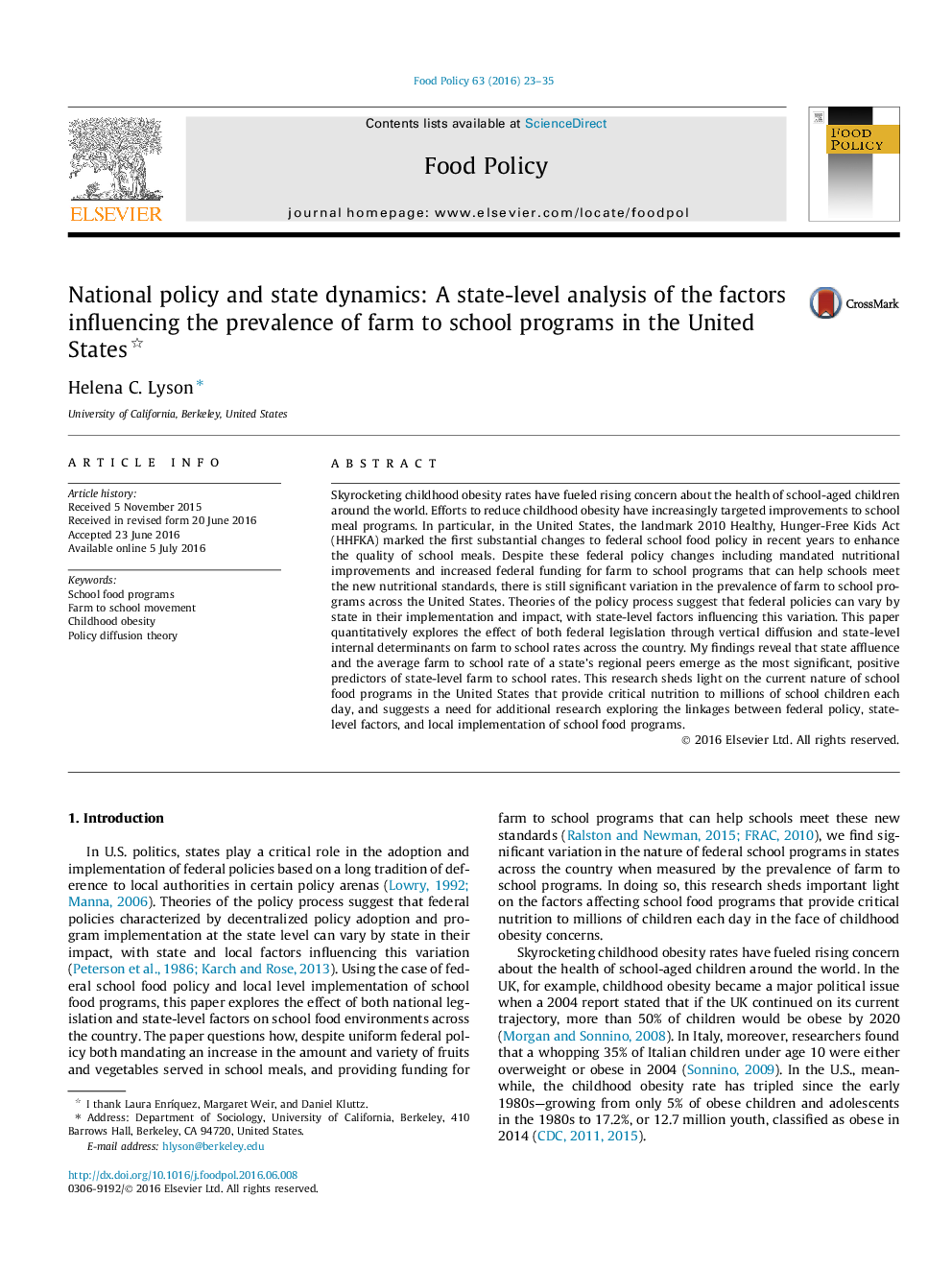| کد مقاله | کد نشریه | سال انتشار | مقاله انگلیسی | نسخه تمام متن |
|---|---|---|---|---|
| 5070149 | 1477013 | 2016 | 13 صفحه PDF | دانلود رایگان |
- This paper explores the impact of federal policy and state-level factors on farm to school rates.
- Results indicate state affluence is a significant, positive predictor of farm to school rates.
- There is also a regional effect on farm to school rates.
- States with less internal affluence require more federal farm to school grant funding.
Skyrocketing childhood obesity rates have fueled rising concern about the health of school-aged children around the world. Efforts to reduce childhood obesity have increasingly targeted improvements to school meal programs. In particular, in the United States, the landmark 2010 Healthy, Hunger-Free Kids Act (HHFKA) marked the first substantial changes to federal school food policy in recent years to enhance the quality of school meals. Despite these federal policy changes including mandated nutritional improvements and increased federal funding for farm to school programs that can help schools meet the new nutritional standards, there is still significant variation in the prevalence of farm to school programs across the United States. Theories of the policy process suggest that federal policies can vary by state in their implementation and impact, with state-level factors influencing this variation. This paper quantitatively explores the effect of both federal legislation through vertical diffusion and state-level internal determinants on farm to school rates across the country. My findings reveal that state affluence and the average farm to school rate of a state's regional peers emerge as the most significant, positive predictors of state-level farm to school rates. This research sheds light on the current nature of school food programs in the United States that provide critical nutrition to millions of school children each day, and suggests a need for additional research exploring the linkages between federal policy, state-level factors, and local implementation of school food programs.
Journal: Food Policy - Volume 63, August 2016, Pages 23-35
